Salkanpur Jina image with an inscription of saṃvat 1299
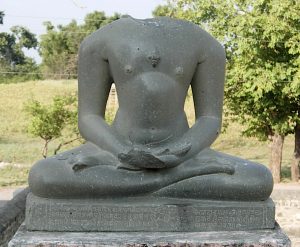
Salkanpur (Dist. Dhār). Seated Jina with an inscription dated VS 1299.(Courtesy ZENODO).
Tepe Skandar Umāmaheśvara image with inscription
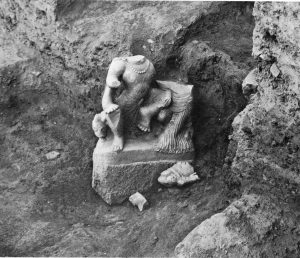
Tepe Skandar (Afghanistan). Umāmaheśvara as found in excavation.
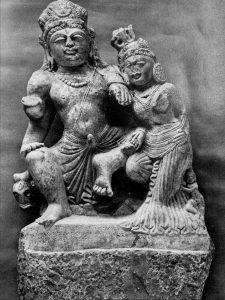
Tepe Skandar (Afghanistan). Umāmaheśvara.
Mārīcī at Salihundam
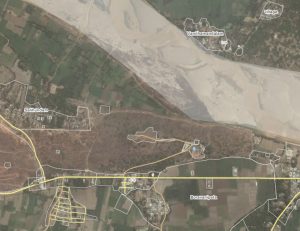
Salihundam (Srikakulam district, Andhra Pradesh). Satellite view (Wikimapia).
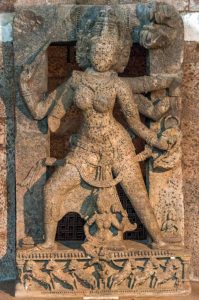
Salihundam (Srikakulam district, Andhra Pradesh). Mārīcī.
Standing figure of Ambikā with an inscription of Bhoja
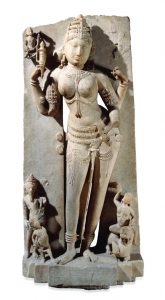
Standing figure of Ambikā from Dhār mentioning king mentioning king Bhoja.Collection of the British Museum, no. 1909,1224.1
Spurious image of Maṇibhadra with an inscription of Kumāragupta
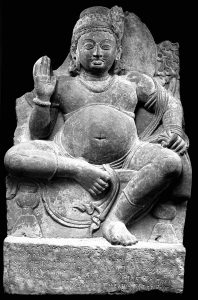
Spurious figure of Maṇibhadra
INIG1100 Budhi Chanderi Inscription of VS 1100
INIG1100 Budhi Chanderi (Guna). On a slab kept in the sculpture shed at Chanderi. Number of lines not given, nāgarī, Sanskrit. Records a praśasti of the Śaiva ācārya Prabodhaśiva, the disciple of another ascetic (name lost) who belonged to the lineage of the Śaiva ascetic Dharmaśambhu. Composed by Daśaratha.
INIG1034 Sihoniyā Inscription of VS 1034
INIG1034 Sihoniyā (Morena). On a Jaina sculpture. 2 lines, old nāgarī, Sanskrit. Second line obliterated; mentions
mahārājādhirāja Vajradāman (Kacchapaghāta).
INIG964 Budhi Chanderi Inscription of VS 964
INIG964 Jyaiṣṭha śu… Budhi Chanderi (Guna). On a stone slab (stored in sculpture shed at Chanderi). Number of lines not given, early nāgarī, local dialect. Mentions the names of a number of persons such as Chīchu, Kesava, Rāula, etc.
Kalinjar Inscription of Vasanta: Balkandeswara
Rock inscription at Balkhandeswara on the northern slope of the hill fortress of Kalinjar in the Banda district in Bundelkhand, Uttar Pradesh. The inscription which mentions a sāmanta named Vasanta is placed above a sculpture showing a water carrier, which is itself placed to the left of an ekamukhaliṅga. Several other such figures are found at Kalinjar. See Hans T. Bakker, The World of the Skandapurāṇa. Northern India in the Sixth and Seventh Centuries. Leiden/Boston: Brill, 2014: 205-209.
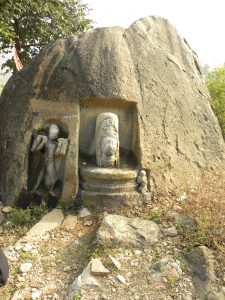
Kalinjar Inscription of Bhāvasomeśvara
This inscription accompanies an ascetic figure with jaṭāmukuṭa in one of the caves on the path leading to the Nīlakaṇṭha temple at the hill fortress of Kalinjar in the Banda district in Bundelkhand, Uttar Pradesh. The figure of the ascetic is carved to the left of an ekamukha liṅga. next to The name Bhāvasomeśvara indicates a Pāśupata ascetic (names starting with Bhāva- are a common feature of Pāśupatas and there is much other evidence for the presence of Pāśupatas at Kalinjar). The same name is know from a 12th-century pedestal inscription of a Śaiva ascetic at Menal (Rajasthan), another Pāśupata centre.
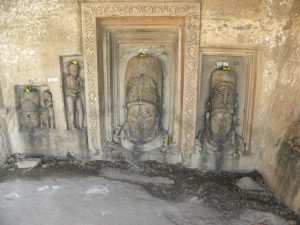
Ekamukhaliṅga shrine of the Bhāvasomeśvara inscription
